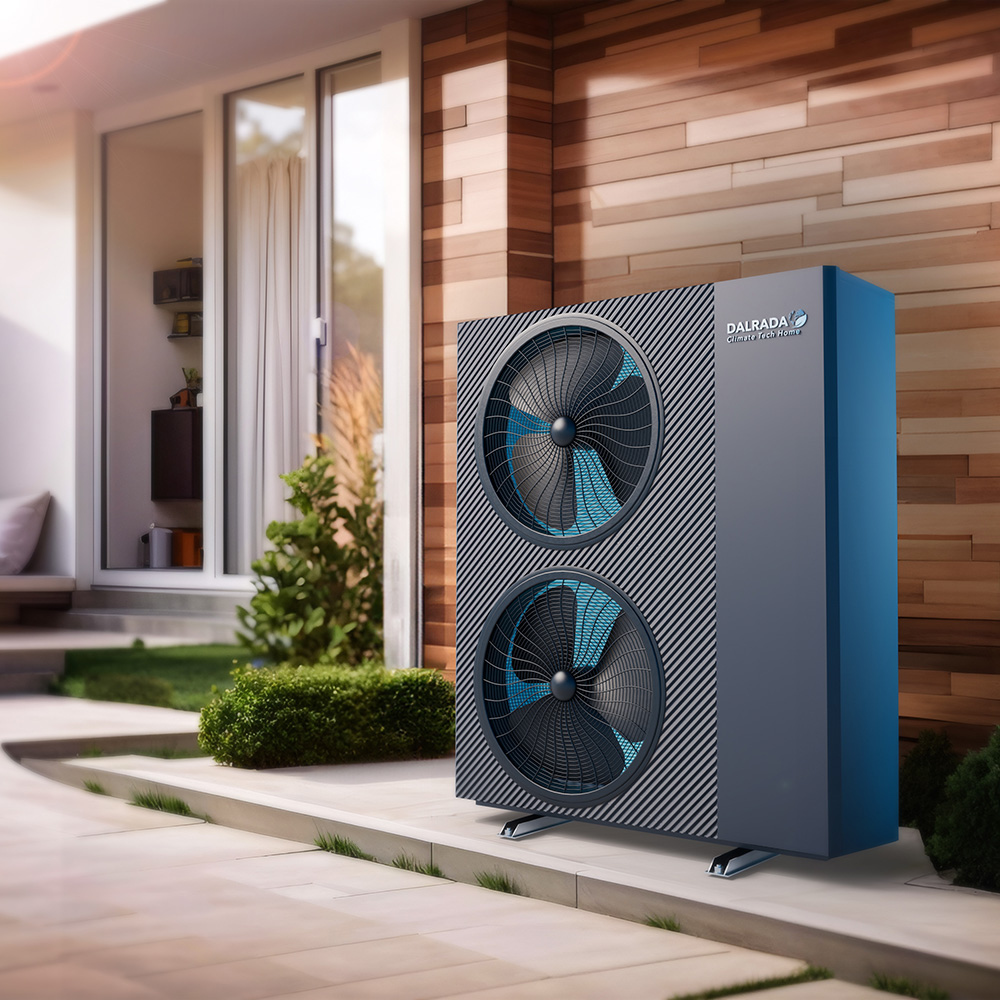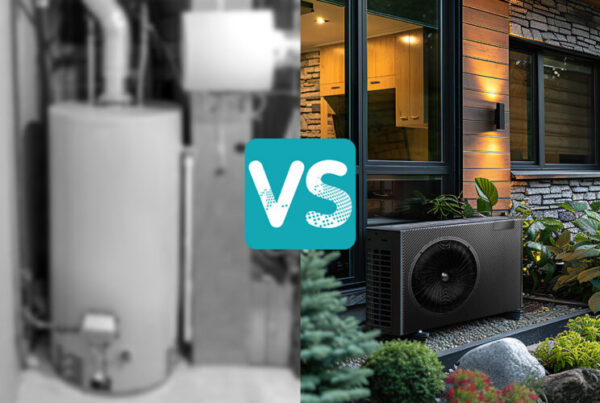
We’ve all been hearing the term “heat pump” quite frequently these days. Between energy independence and home modernization efforts, heat pumps have become increasingly popular around the world.
But why? What exactly is a heat pump, anyway? What does it “pump” and how is it revolutionizing heating, cooling, and managing air quality within homes?
Read more to learn about heat pumps and the role they play in reducing energy usage and cost while improving overall energy efficiency.
Heat Pumps: Simplified
At its core, a heat pump is a versatile system designed to efficiently regulate indoor climate by simply redistributing existing heat energy. Heat pumps extract heat from one location and transfer it to another using a refrigeration cycle. They can provide both heating and cooling efficiently, making them a versatile solution for maintaining comfortable indoor environments. In a sense, heat pumps are essentially an all-in-one replacement or upgrade to your existing HVAC (heating, ventilation, and air conditioning) system.
How Heat Pumps Operate
Winter Functionality: In colder months, heat pumps pull any available warmth from outside with a compressor and pump it inside.
Summer Functionality: As temperatures rise, the heat pump reverses its operation: it absorbs heat from indoors and expels it outside, leaving your home refreshingly cool during scorching summers.
Basically, heat pumps offer consistent heating and cooling performance, providing comfort throughout the year regardless of outdoor temperatures.
So, what’s the result of installing a heatpump? Your home feels comfortable year round. Plus, you use less energy, which saves money!
Basic Components of a Heat Pump System
- Outdoor Unit: This component houses a coil and a fan, pivotal for facilitating the exchange of heat in the outdoor environment.
- Indoor Unit: Similarly equipped with a coil and a fan, the indoor unit works with its outdoor counterpart to regulate temperature and air quality within your home.
- Refrigerant: Acting as the system’s lifeblood, refrigerant circulates throughout the heat pump, absorbing and releasing heat as it traverses the various components.
- Compressor: Responsible for pressurizing the refrigerant and propelling it through the system, the compressor plays a crucial role in the heat pump’s operation.
- Reversing Valve: This ingenious device enables the heat pump to switch seamlessly between heating and cooling modes by altering the flow of refrigerant.
- Expansion Valve: Serving as a metering device, the expansion valve regulates the flow of refrigerant, ensuring optimal pressure and temperature control within the system.
When these critical components are working in unison, heat is properly moved rather than generated through combustion. Ultimately, heat pumps are an efficient heating and cooling solution offering lower energy consumption and reduced environmental impact compared to traditional heating and cooling systems.
Environmental and Efficiency Benefits
One of the most significant advantages of this climate technology is its eco-friendliness. Unlike traditional furnaces that rely on the combustion of fossil fuels, heat pumps operate largely on electricity, significantly reducing carbon emissions. Additionally, the CO2 refrigerants used in these systems are safe and have very low environmental impact potential. By harnessing the principles of thermal transfer, heat pumps efficiently regulate indoor temperature without generating excess heat, which also results in substantial energy savings.
Versatility and Adaptability
One of the coolest (pun intended) aspects of heat pumps is their versatility. Heat pump heating and cooling serves as a true home energy solution. Whether you’re facing the bitter winter or the sweltering summer, a heat pump adapts to meet your comfort needs.
Larger, industrial and commercial-sized heat pumps are becoming increasingly popular as well, because business owners have discovered how much more money they’re saving due to reduced energy costs. They’re also enjoying significant tax credits and other incentives simply by installing these larger heat pumps.
Home Heat Pumps: The Bottom Line
Overall, heat pumps represent a sustainable and cost-effective heating and cooling solution that can contribute to energy savings, environmental protection, and enhanced comfort levels in your home.
As a whole, heat pumps and electrification represent a paradigm shift in energy-efficient homes, offering a cleaner, more climate-conscious alternative to traditional HVAC systems. With thermal heat transfer, these innovative devices offer exceptional year-round climate control while reducing environmental impact. As we aim for a more sustainable future, adopting heat pump technology is crucial for creating a greener and more energy-efficient world for all.
To learn more about Dalrada HOME’s available heat pump systems, feel free to browse our website or contact us today. We look forward to speaking with you!



